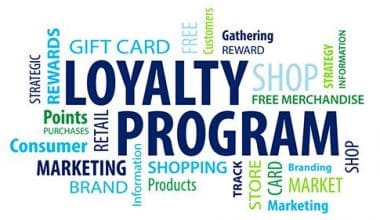When businesses complete the production of goods, the products are taken to a product market where they will be traded. A product market is where products are matched with customer demands. The products are made with an understanding of specific consumer personas, the challenges they face, and the goals they want to accomplish. Understanding the product market and how to achieve a product market fit is crucial for the success of a product.
Learn more about a product market and how to achieve market fit by conducting a survey, its types, and examples.
How Do You Define a Product Market?
Product market refers to the intersection of a product and its intended market, which is the point at which the market’s needs serve as a driving force behind the product’s creation, introduction, and sale.
The product market is where the supply of finished items and the demand for those things compete. Companies fulfill the role of suppliers and make their wares available to prospective buyers at prices established in accordance with the principles governing the interplay of supply and demand.
What Are the Four Types of Product Markets?
There are two ways to classify the types of product markets. The two classifications provide different perspectives on the types of product markets. One classification might be more relevant depending on the specific question or context. The classifications are product types and market structure.
#1. Types of Product Markets Based on Consumer Products
Product markets that are based on consumer products are;
- Convenience products: These are items that consumers frequently purchase with minimal effort.
- Examples include groceries and household items.
- Marketing strategies for these products typically focus on widespread availability and low prices.
- Shopping products: Consumers spend more time and effort comparing shopping products purchased less frequently to convenience products.
- Examples include furniture, appliances, and electronics.
- Marketing strategies for these products involve showcasing their features, quality, and price.
- Specialty products: These are unique or high-end products that consumers are willing to make a special effort to purchase.
- Examples are luxury cars or designer clothing.
- Marketing strategies for specialty products involve targeted promotion and exclusive distribution.
- Unsought products: These are products that consumers don’t think about until they need them.
- They include life insurance or pre-planned funeral services.
- Marketing strategies for unsought products focus on creating awareness and demonstrating the product’s benefits.
#2. Types of Market Structures
Types of market structures include:
- Perfect competition: This market structure has many small firms producing similar products. Supply and demand determine prices, and businesses aim to maximize profits by keeping production costs low.
- Monopolistic competition: In this market structure, many firms produce differentiated products. Each firm has some control over its prices, and marketing strategies often focus on product differentiation and branding.
- Oligopoly: In this market structure, few large firms dominate the market. These firms control prices significantly and may engage in strategic or non-price competition. Oftentimes, to maintain a fair market, government regulations are necessary.
- Monopoly: This market structure has only one firm controlling the entire market. The firm controls prices significantly, and government regulations may be necessary to prevent unfair pricing practices.
What Are the Examples of Product Markets?
Product markets are specific marketplaces where buying and selling of products takes place. Examples of product markets include the following
#1. Fast Food Industry
Fast food can be considered an example of a product market because its value is tangible. This market includes restaurants like McDonald’s, KFC, and Burger King, where customers purchase fast food items like burgers, fries, and soft drinks.
#2. Consumer Electronics
Companies like Apple, Samsung, and Sony, which are into producing and selling electronic devices such as smartphones, laptops, televisions, and headphones, are examples of this market. Apple is well-known for its product marketing strategies, which focus on understanding customer needs and creating innovative products that cater to them.
#3. Wearable Technology
The wearable technology market concentrates on products customers may wear, such as smartwatches, fitness trackers, and smart eyewear. Google Glass is an example of a product that failed to achieve product-market fit in the wearable technology market due to low adoption and a lack of clear use cases.
#4. Online Advertising
Google AdSense is an example of a product that achieved product-market fit in the online advertising market. AdSense enables businesses to display paid ads on a network of websites and has generated billions in revenue by meeting the demand for more ad space.
#5. Streaming Services
Customers can watch movies and TV shows online on streaming services offered by businesses like Netflix, Hulu, and Amazon Prime Video. Netflix is an example of a product that achieved product-market fit by understanding customer needs for on-demand entertainment and offering a wide variety of content.
This market allows users to create content they like and share it with others on social media platforms like Facebook, Twitter, and Instagram. TikTok is an example of a product that gained traction with a better product-market fit after the initial failure of its predecessor.
Product Market Fit
Product-market fit is essential for both startups and established companies, as it determines whether a product will succeed or fail. The term refers to when a business successfully combines a desirable market with a product that can fulfill the needs of that market. It is when an entrepreneur recognizes a need in the market and then develops a solution that buyers desire to purchase.
To achieve a market fit, a company’s target customers must buy, use, and promote the products in numbers large enough to sustain its growth and profitability. Hence, it shows that the product meets the demands of a viable market and also that the product has a strong value proposition, solves a problem within a larger market, and generates a steady stream of customers and sales. Also, it is an early indicator of success, allowing the business to rely on organic marketing or word of mouth to increase its customer base and sales.
Finding Product Market Fit
The process of finding product-market fit is a gradual one that relies on consistently prioritizing, delivering, and measuring product value. Some steps to achieve it include:
- Start with a simple visualization exercise to understand the spectrum of product difficulty.
- Simplify the product idea, compare it with the current plan, and find a version that exists between the two that your target customer will understand.
- Conduct market research to better understand the core value proposition and target customer.
Product Market Fit Survey
A product-market fit survey is a tool for determining if a product addresses and solves the needs of its target market. Also, it evaluates if it is worth launching in the market.
The most tangible way to assess product-market fit is by sending surveys to customers, asking questions about their opinions on the product and its necessity. Also, you can assess the fit through a survey to know if there’s a steady stream of customers excitedly buying the product and if the customers are spreading the product through word of mouth.
A commonly used product-market fit survey is the Sean Ellis Product Market Survey, which focuses on the question, “How would you feel if you could no longer use the product?” Sean Ellis says a 40% response rate of users feeling “very disappointed” is the benchmark for the fit.
The optimal sample size for a product-market fit survey is around 40-50 responses, with a diverse set of respondents who are engaged with the product and have used it within the last two weeks. After analyzing the survey results, businesses can use the insights to improve their product, reposition it around unique attributes, and solve the target market’s problems.
To create a product-market fit survey, consider using platforms like SurveyMonkey, which allow for easy design and customization of survey questions and presentations. Customers’ needs evolve, so ongoing research is necessary to maintain market fit.
Factor Market vs Product Market
A factor market is a specific kind of resource market where companies can purchase the land, labor, and raw materials they require to produce their products. It is essentially a market for materials used in the production of goods. Examples include a job fair, an owner selling land to a shopping mall, or banks lending money to entrepreneurs.
The product market refers to a place where goods and services are bought and sold, while the factor market refers to the employment of factors of production such as labor, capital, and land. Examples include a pizza café selling finished products such as pizza or a furniture manufacturer selling tables and chairs.
Differences Between Factor and Product Markets
Factor and product markets are two different types of markets in the business world. They differ in several aspects, including purpose, efficiency, size, and regulation.
Factor market vs product market: Purpose
A factor market is a marketplace where factors of production (land, labor, and capital) are bought and sold. ( Eg: markets for labor, land, and capital.) The product market is a marketplace where finished goods and services are bought and sold. (Eg: consumer goods, durable goods, and services markets)
Factor Market vs Product Market: Efficiency
Factor markets are more efficient than product markets due to the lack of information asymmetry. This leads to more liquid markets and prices that better reflect the true underlying value of the inputs traded. While product markets are less efficient than factor markets, they offer greater consumer choice and flexibility.
Factor Market vs Product Market: Regulation
Product markets are generally more regulated than factor markets because it is easier to manipulate prices in product markets, leading to unfair outcomes for buyers and sellers.
Factor Market vs Product Market: Size
Factor markets are typically smaller than product markets because more finished products are traded than inputs.
What Are the Three Types of Factor Markets?
Factor markets are essential for businesses to obtain the resources they need to produce goods and services. There are three primary types of factor markets:
- Labor market: This market deals with hiring human resources, where people make themselves available for employment. In this market, individuals also offer their skills and labor in return for wages or other compensation.
- Capital market: Capital is essential for businesses to finance operations, purchase equipment, and invest in growth opportunities. Also, companies and individuals can obtain capital through business loans or investments in this market. .
- Land and natural resources market: This market includes exchanging land and natural resources necessary for businesses to produce goods and services. Resources such as raw materials, minerals, and energy sources are obtained and sold in this market.
What Are the Four Factors of Production?
A factor of production is a resource that is used to produce commodities and services. It is one of the basic components of the economy.
The four factors of production are
- Land: Land includes all natural resources used to create products and services.
- Labor: This is individuals’ effort to create commodities and services.
- Capital: The equipment, tools, and structures people employ to produce commodities and services are known as “capital.”
- Entrepreneurship: An entrepreneur is a person who uses capital, labor, and other production elements in combination to turn a profit.
Who Supplies in Product Markets?
A supplier is a person or organization that offers a good or service to another company. It is possible for a supplier to also act as the product’s manufacturer and as the product’s distributor. The suppliers in a product market are the companies that actually make the goods being sold.
- PRODUCT MARKET FIT: Meaning, Examples, Survey & How to Produce It
- EMPLOYEE FEEDBACK: Definition, Examples & When to Use Them
- CRUCIAL BUSINESS QUESTIONS for Small & Large Businesses 2023
- Customization Marketing: Definition, Concept, Types & Examples
- CUSTOMER JOURNEY ANALYTICS: Guide & All to Know






